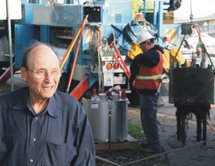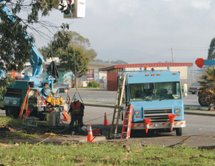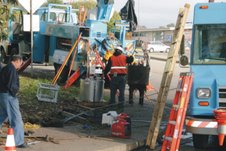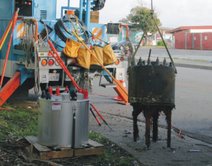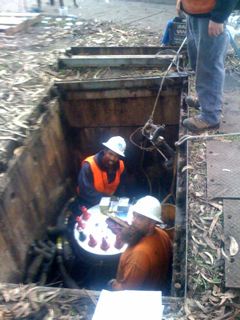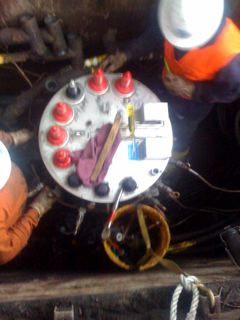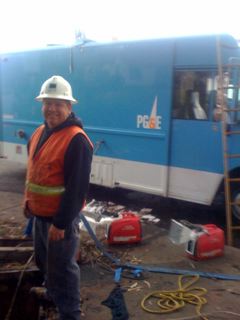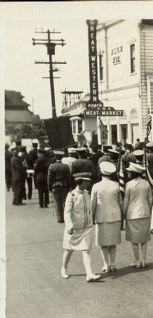Story and photos by Jim Elliot
Hi June,
Pete Douglas’ party was particularly notable, not just for the presence of the
Coastside Curmudgeon himself
(Photo: Pete Douglas’s image atop a festive cake)
and a few hundred fans of the Bach Dynamite and Dancing Society, but also for the presence of any number of people who have lived and worked at the Bach and have been inspired by the experience.
As you are aware, the power was off in El Granada froma bout 8:00 am to about 9:00 pm. The outtage was due to a failed high voltage switch, underground, in a vault at the corner of Santiago and The Alameda, across from El Granada Elementary School.
You’ll find a picture below of Burt Blumert
supervising the repairs. His contribution was invaluable to the success or the fine work
performed by PG&E crews.
Jim Elliot
Coastside Realtor / Owner: Del Mar Properties
(H) 650-726-0473
(c) 650-743-4086
(o) 650-712-6800
EVER DREAMED OF LIVING RIGHT ON THE BEACH?
WITH EACH SALE WE MAKE A DONATION TO IMPROVE THE MEDIAN STRIPS ON THE
COASTSIDE


